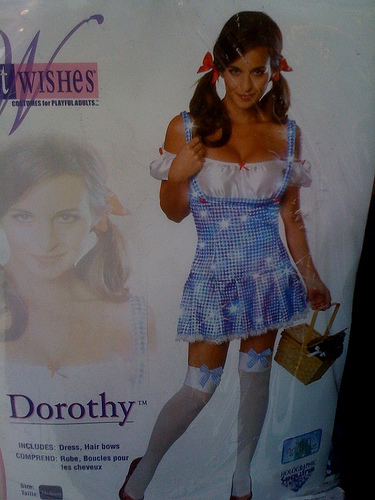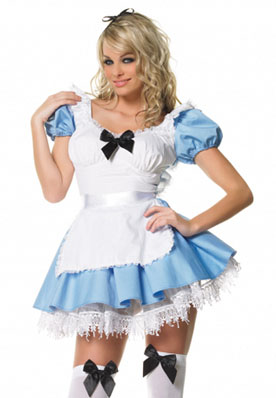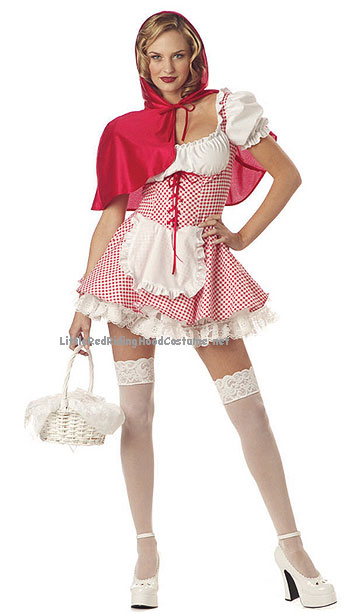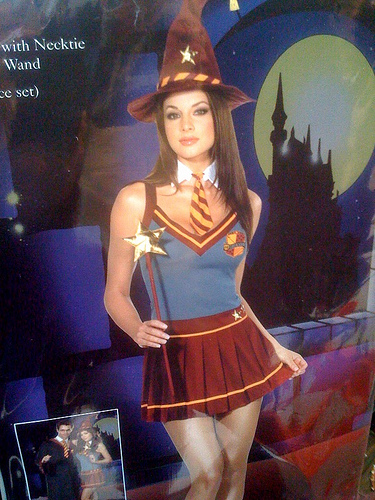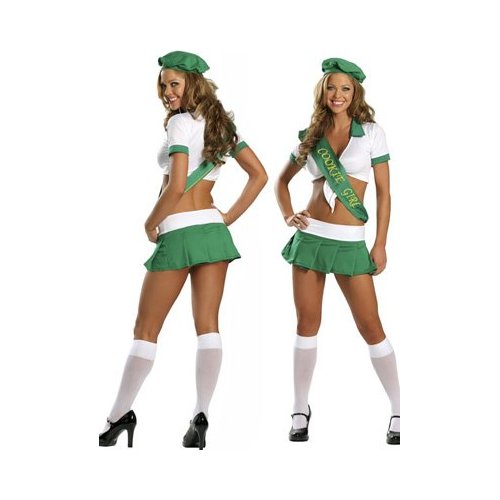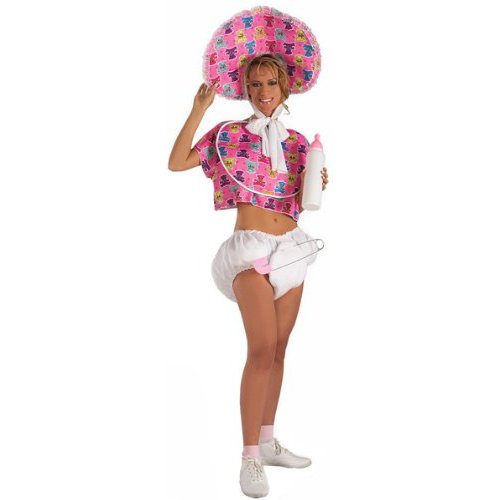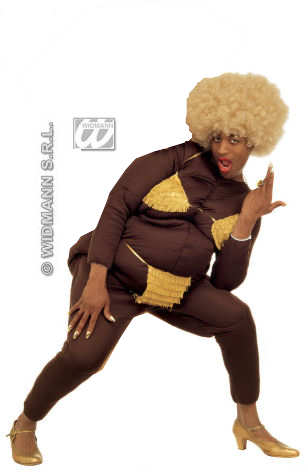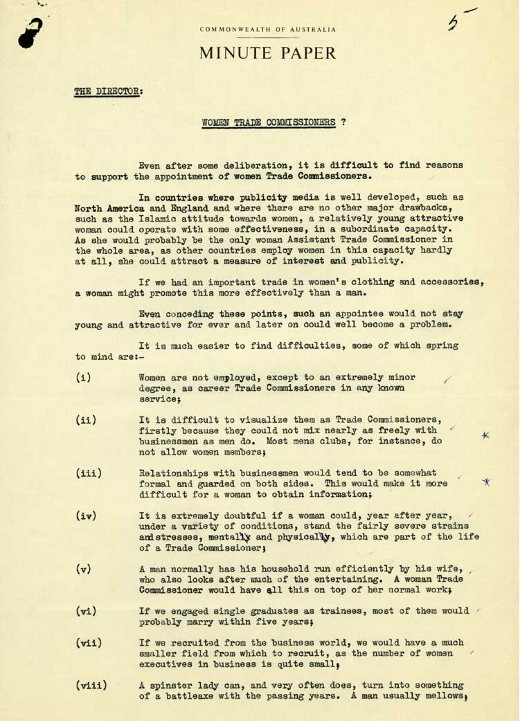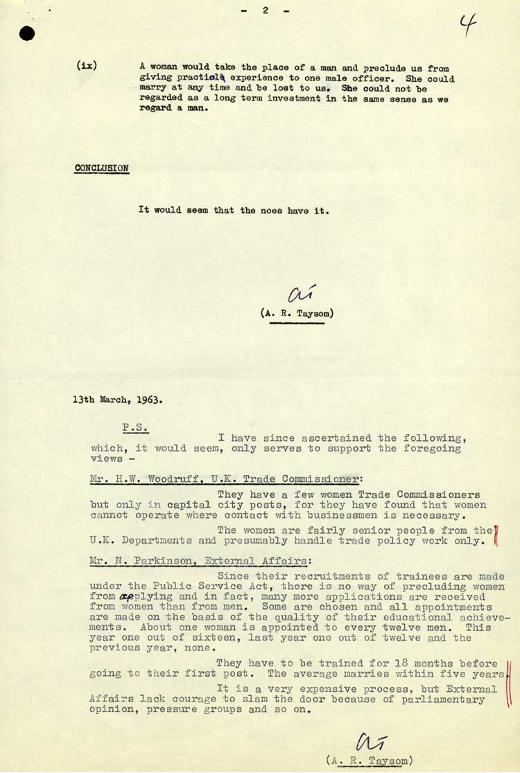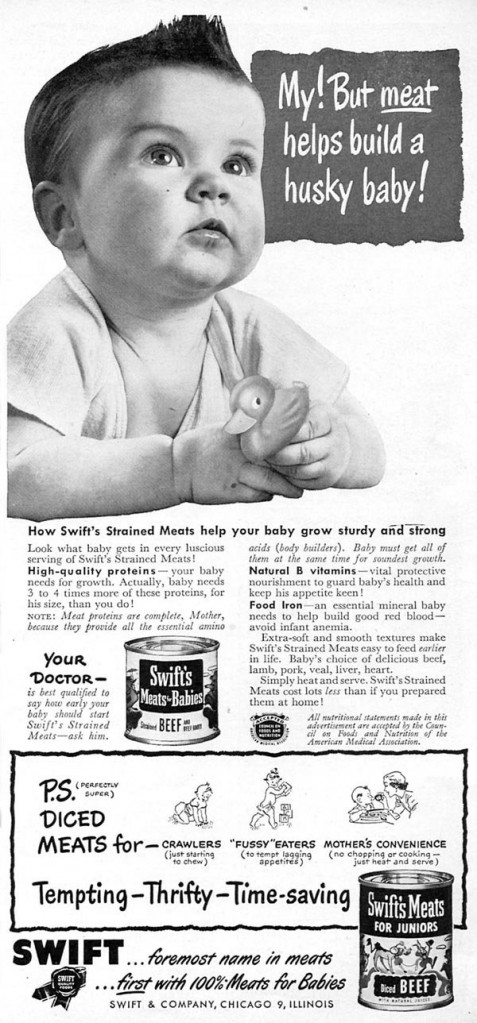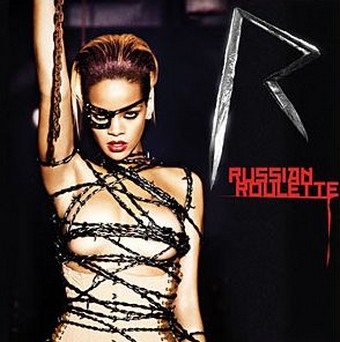Cute Bruiser brought our attention to some Halloween costumes for girls that illustrate parallel trends. Her pictures are from a Shoppers store in Canada.
1. Girls as bratty. In this case, the Drama Queen (“It’s all about me!”):

(I know, that costume doesn’t even make sense.)
2. The sexualization of young girls. In this case, The Ravager from The Covenant:

Since that’s a little blurry, here’s an image from a website:
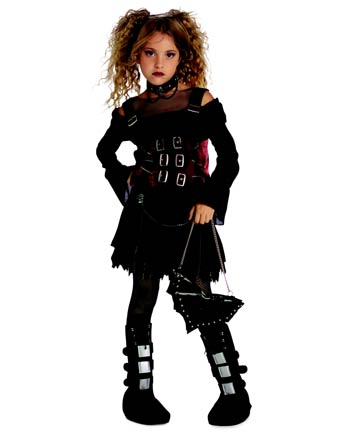
Miley Cyrus’ 9-year-old sister, Noah, chose to go this direction, as reader Kristyn G., Spagnoli F., and Jen C. pointed out:
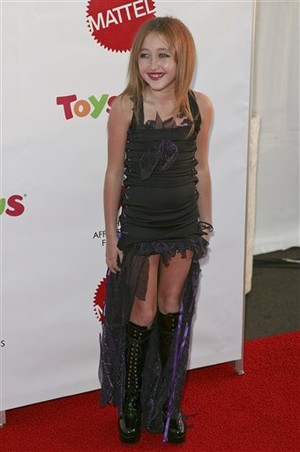
—————————
Lisa Wade is a professor of sociology at Occidental College. You can follow her on Twitter and Facebook.

